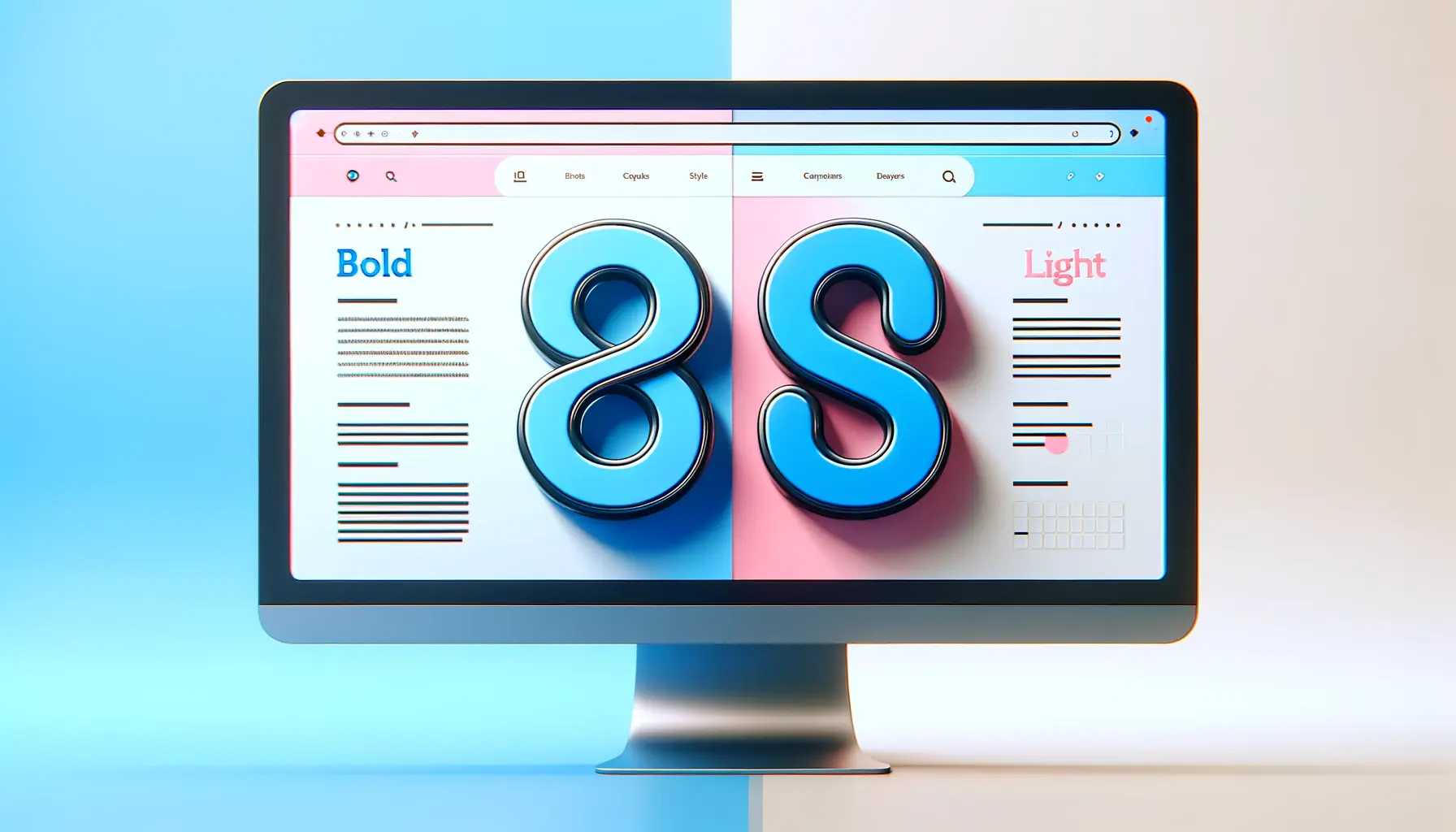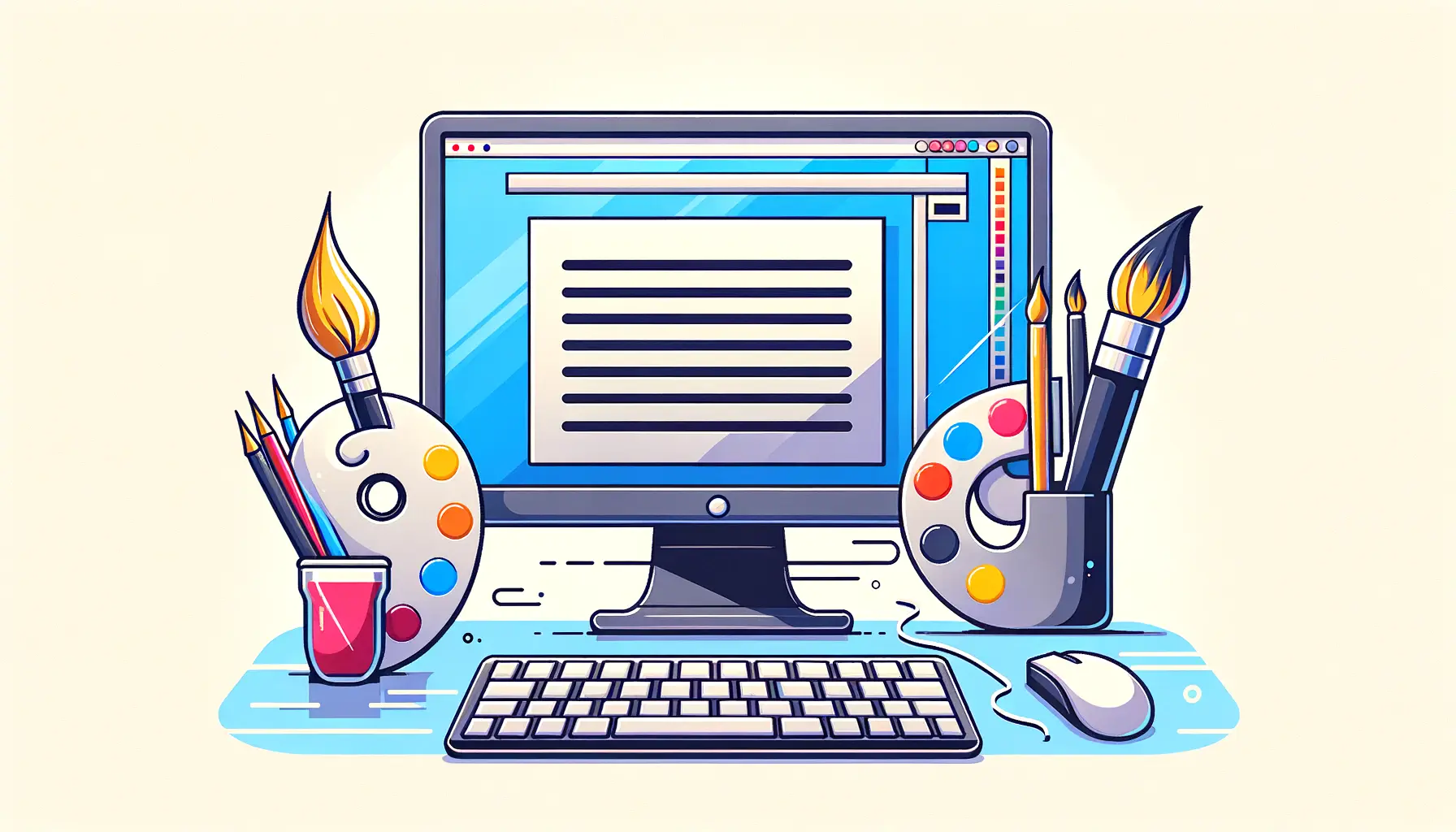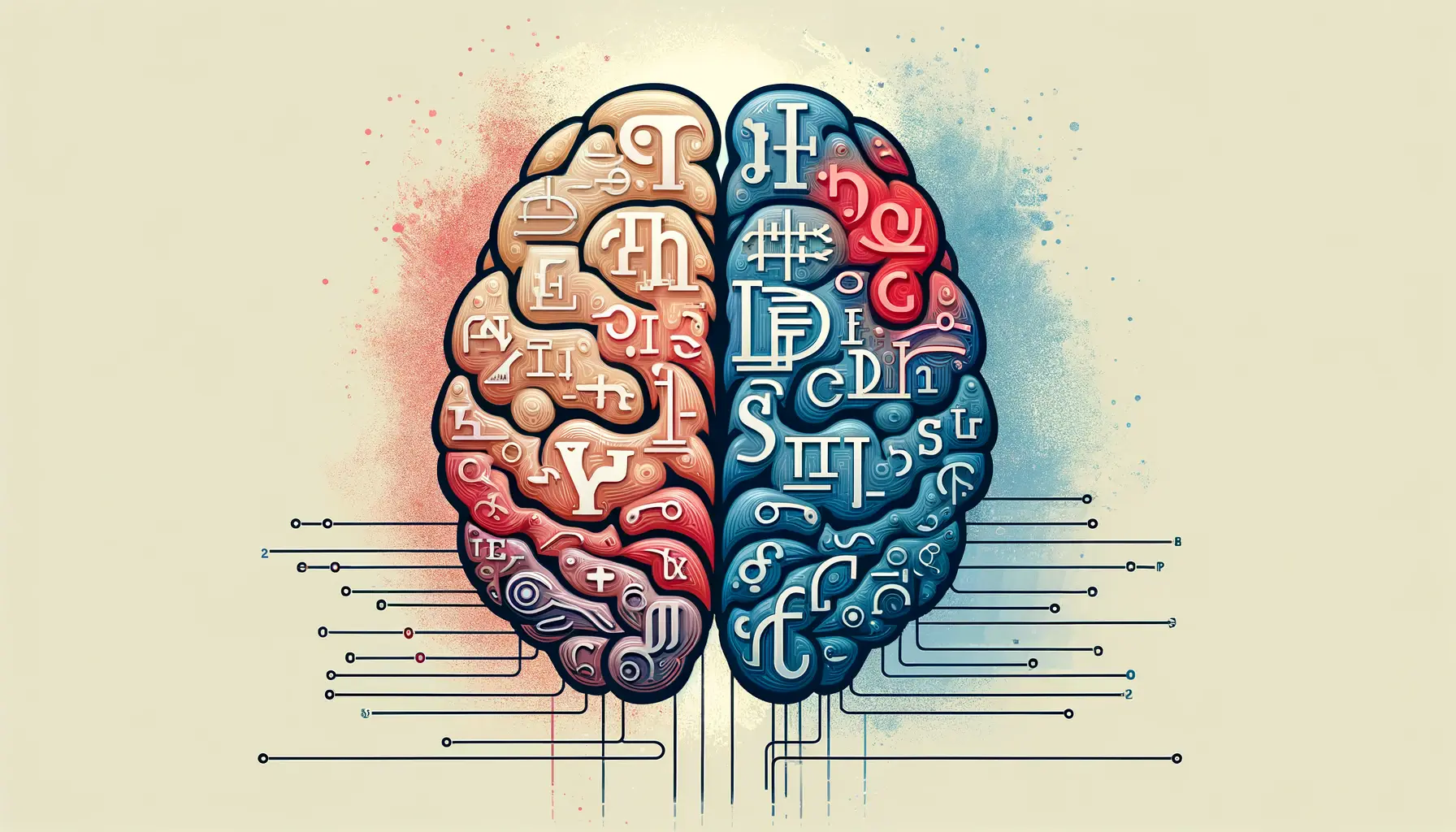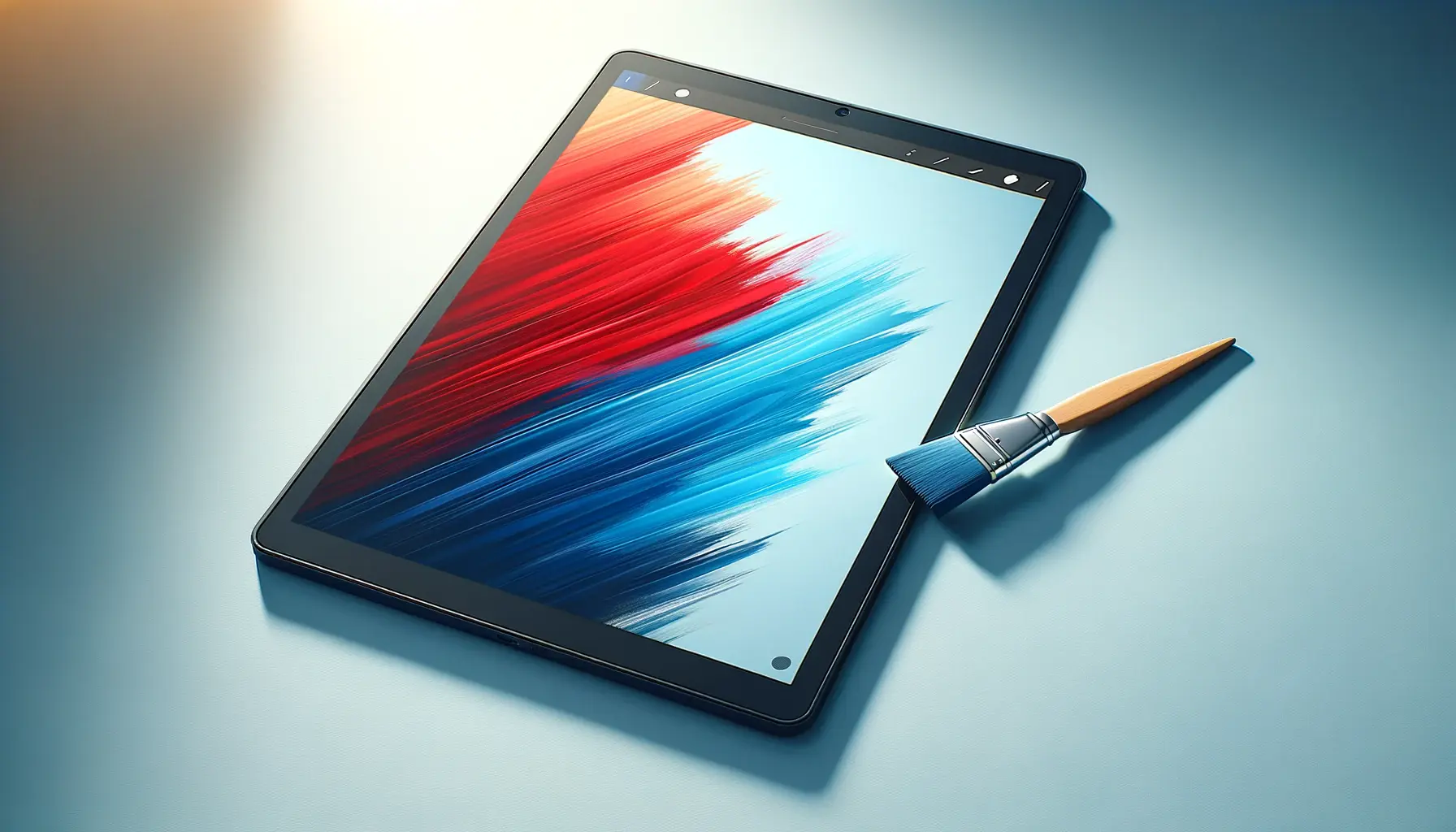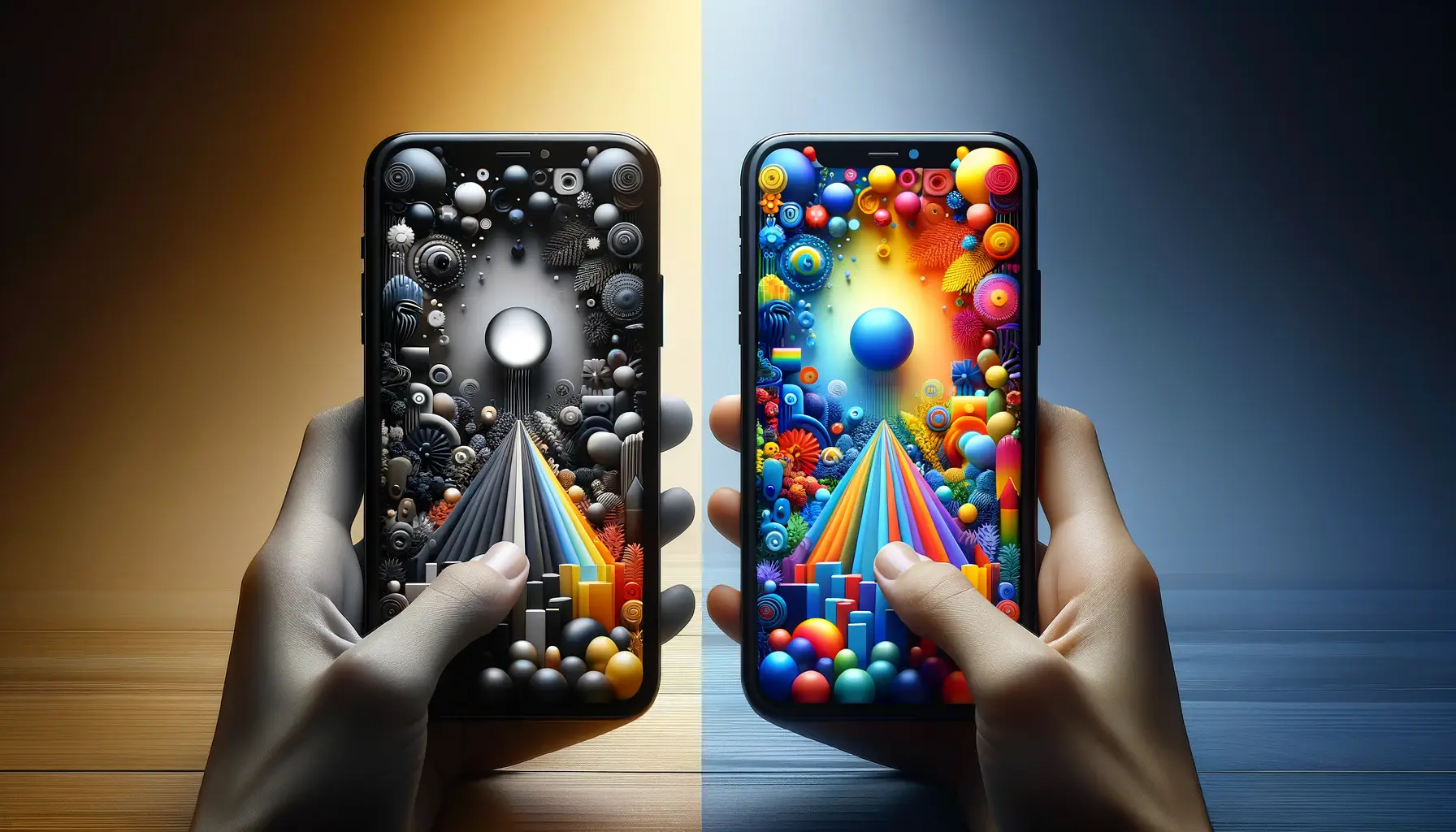The intricate dance between typography and human psychology is a fascinating study that extends far beyond the mere selection of fonts for aesthetic appeal.
The choice of font can profoundly influence the perception, emotion, and even the decision-making process of the reader.
This connection between font choices and psychological impact is not just a subject of academic interest but a crucial tool in the hands of designers and marketers who aim to communicate more effectively with their audience.
At its core, typography is an art form that combines visual beauty with functional communication.
The psychology behind font choices delves into how different typefaces can evoke specific emotions, convey messages, and shape the overall narrative of a brand or piece of content.
Whether it’s the trustworthiness exuded by a classic serif font or the modern, clean lines of a sans serif, every font choice carries with it a set of associations and emotional responses that can significantly affect how content is received.
- The Role of Fonts in Brand Perception
- Impact of Font Choices on User Experience
- Typography Trends and Their Psychological Impacts
- Font Choices in Digital vs. Print Media
- Choosing the Right Font for Your Brand Identity
- Font Psychology in Marketing and Advertising
- Global Influence of Font Choices
- Conclusion: The Profound Impact of Font Choices
- FAQs: Understanding the Psychology Behind Font Choices
The Role of Fonts in Brand Perception
Creating Emotional Connections
Fonts have the power to create an immediate emotional connection with the audience.
This connection is not arbitrary; it’s deeply rooted in the psychological traits associated with different typefaces.
For instance, serif fonts, with their traditional and formal appearance, are often associated with reliability and respectability.
This makes them a popular choice for brands that want to project an image of authority and heritage, such as legal firms, financial institutions, and luxury brands.
On the other hand, sans serif fonts, known for their clean and modern look, convey a sense of simplicity and approachability.
They are frequently used by tech companies and startups aiming to project a forward-thinking and innovative image.
The psychological impact of these font choices on brand perception cannot be overstated, as they play a key role in shaping the audience’s first impression and emotional response to a brand.
Enhancing Message Clarity
The clarity of a message can be significantly influenced by the chosen font.
A well-selected font ensures that the message is not only visually appealing but also easy to read and understand.
For example, fonts with high legibility, such as Helvetica or Arial, are often used in body text to facilitate easy reading and comprehension.
This is particularly important in digital platforms where readers skim content and can easily be deterred by complex or hard-to-read typefaces.
Moreover, the appropriateness of a font in relation to the content it presents is crucial for maintaining message clarity.
A mismatch between the font style and the content’s tone can lead to confusion and dilute the intended message.
Therefore, understanding the psychological implications of font choices is essential for enhancing the clarity and effectiveness of communication.
The psychology behind font choices is a powerful tool in shaping brand perception and enhancing message clarity, making it essential for effective communication and marketing strategies.
Impact of Font Choices on User Experience
The influence of typography on user experience (UX) extends far beyond mere aesthetics.
The choice of font can significantly affect how users interact with and perceive a website or application.
A thoughtful selection of typefaces can enhance readability, usability, and even the mood of the user, thereby shaping the overall experience a user has with a digital product.
Fonts play a crucial role in creating a seamless and enjoyable user experience.
They do so by:
- Improving Readability: The primary function of text on any digital platform is to communicate information. Fonts that are easy to read on various devices and screen sizes contribute to a positive user experience by allowing users to consume content without strain.
- Setting the Tone: Just as in branding, fonts in UX design help set the tone of the interaction. A playful, light-hearted font can make an app feel more approachable, while a more structured, straightforward font might be used to convey seriousness and efficiency.
- Guiding User Flow: Through the use of different weights, styles, and sizes, fonts can guide users’ attention to key areas of a website or app, effectively influencing navigation and the overall user journey.
Fonts and Accessibility
Accessibility in design ensures that products and services are usable by everyone, regardless of their abilities or circumstances.
When it comes to typography, the choice of font has a direct impact on accessibility.
Fonts that are too decorative or have poor contrast with their background can make text difficult to read for users with visual impairments or dyslexia.
Therefore, selecting fonts that are legible and accessible to a wide audience is a key consideration in UX design.
Some strategies for enhancing accessibility through font choices include:
- Choosing fonts with distinguishable letterforms to reduce reading errors.
- Ensuring adequate contrast between text and its background.
- Using larger font sizes and line spacing to improve readability.
User Emotions and Fonts
The psychological effect of fonts also plays into the emotional experience users have while interacting with digital content.
Specific fonts can evoke particular emotions and feelings, influencing how users feel about the content they are engaging with.
For instance, a study might find that users feel more relaxed and open when reading content in a certain font, directly affecting their engagement levels and satisfaction with the product.
By carefully considering the psychological impact of font choices, designers can create more engaging and emotionally resonant user experiences.
This not only enhances the usability of a product but also fosters a deeper connection between users and the brand.
Understanding the impact of font choices on UX is essential for creating digital products that are not only visually appealing but also highly functional and accessible to all users.
Typography Trends and Their Psychological Impacts
The world of typography is ever-evolving, with trends coming and going, each leaving its mark on design and user perception.
Understanding these trends and their underlying psychological impacts is crucial for designers looking to stay ahead of the curve and create resonant, effective designs.
Let’s explore some of the current typography trends and dissect their psychological implications.
Recent typography trends include:
- Minimalist Sans Serifs: The trend towards minimalist, sans serif fonts reflects a broader societal shift towards simplicity and clarity. These fonts are perceived as modern and straightforward, suggesting honesty and transparency in communication.
- Handwritten and Custom Fonts: The rise of handwritten and custom fonts in branding and web design signals a desire for authenticity and personal touch. These fonts can make a brand appear more approachable, friendly, and unique, fostering a sense of individuality.
- Bold and Experimental Typography: Bold, experimental fonts are increasingly used to grab attention and make a statement. This trend reflects a growing confidence in brand identity, with companies willing to stand out and be different. Psychologically, these fonts can evoke feelings of innovation and creativity.
Minimalist Sans Serifs and User Trust
The preference for minimalist sans serif fonts in digital platforms and branding can be partly attributed to their association with transparency and efficiency.
In a digital age where users are bombarded with information, a clean, easy-to-read font can be a breath of fresh air, subconsciously building trust between the user and the platform.
Moreover, minimalist fonts are often associated with modernity and progressiveness.
Brands that utilize these fonts can be perceived as forward-thinking and in tune with the current times, appealing to a demographic that values innovation and simplicity.
Handwritten Fonts and Brand Personality
Handwritten fonts offer a stark contrast to the clean lines of sans serif typefaces, bringing warmth and personality to digital spaces.
These fonts can convey a range of emotions, from whimsy and light-heartedness to elegance and sophistication, depending on the style of the handwriting.
The psychological impact here is clear: users are more likely to feel a personal connection to brands that use handwritten fonts, as they suggest a human touch in an increasingly digital world.
This trend towards personalized typography reflects a broader shift towards customization and personalization in design, as brands strive to stand out and resonate on a personal level with their audience.
Bold Typography and Engagement
Bold typography is not just a stylistic choice; it’s a strategic tool for engagement.
Large, impactful fonts command attention and can make headlines, calls to action, and key messages stand out.
From a psychological perspective, bold fonts convey confidence and assertiveness, encouraging users to take notice and, ideally, take action.
This trend towards boldness in typography mirrors a societal shift towards boldness in communication, with brands and individuals alike seeking to make their voices heard in a crowded digital landscape.
Staying abreast of typography trends and understanding their psychological impacts is essential for creating designs that not only look good but also resonate deeply with the intended audience.
Font Choices in Digital vs. Print Media
The medium through which content is delivered—be it digital or print—plays a significant role in the selection of fonts.
This choice is not merely a matter of preference but is deeply rooted in the functionality, readability, and psychological impact of the font in its respective medium.
Understanding the nuances between font choices in digital versus print media is crucial for effective communication.
In digital media, readability and screen compatibility are paramount.
Fonts must be legible across various devices and screen resolutions, from the smallest smartphones to the largest desktop monitors.
This necessity has led to the popularity of sans serif fonts in digital platforms, as their clean lines and simple forms render well on screens, enhancing readability and user experience.
Additionally, digital media allows for dynamic text resizing and screen adjustments, requiring fonts that maintain legibility and aesthetic appeal across different formats.
Psychological Impact of Digital Fonts
The psychological impact of fonts in digital media extends beyond mere readability.
The choice of font can influence how users perceive the content and, by extension, the brand or platform presenting it.
For example, a tech company might use a sleek, modern sans serif font to convey innovation and efficiency, aligning with users’ expectations for technology brands.
Conversely, a digital lifestyle magazine might opt for a more distinctive serif or handwritten font to express personality and warmth, aiming to create a more personal connection with its readers.
Print media, on the other hand, has its own set of considerations.
The tactile nature of printed materials adds a physical dimension to the reading experience, allowing for a wider range of font choices, including those with finer details and more decorative elements that might not render well on screens.
Print media’s static format means that readability concerns, such as font size and spacing, must be addressed at the design stage, as the reader cannot adjust these elements to their preference.
Choosing Fonts for Print Media
When selecting fonts for print media, designers often consider the material’s overall design and layout, the paper quality, and the printing process itself, which can all influence how the final product will look and feel.
The psychological impact of font choices in print media cannot be underestimated; for instance, luxury brands frequently use elegant serif fonts in their print advertising to evoke sophistication and timelessness, appealing to consumers’ aspirations and desires.
Moreover, the choice of font in print media can significantly affect the material’s accessibility.
Designers must ensure that font size, spacing, and color contrast are optimized for all readers, including those with visual impairments.
This consideration underscores the importance of selecting fonts that not only look good but also serve the functional needs of the audience.
Whether for digital or print media, the choice of font is a critical decision that influences readability, user experience, and the psychological connection between the content and its audience.
Choosing the Right Font for Your Brand Identity
Establishing a brand identity involves a myriad of decisions, from color schemes to logos, and, crucially, the choice of font.
This decision is not merely aesthetic; it’s a strategic element that contributes significantly to how a brand is perceived and experienced.
The right font can enhance brand recognition, convey brand values, and set the tone for communication.
Here’s how to navigate the process of selecting the perfect font for your brand identity.
To choose the right font for your brand, consider the following steps:
- Understand Your Brand Personality: Begin by defining the personality and values of your brand. Is your brand traditional or modern, informal or corporate? The font you choose should reflect these traits and resonate with your target audience.
- Consider Readability and Versatility: A font that looks great but is hard to read can detract from your brand message. Ensure your chosen font is legible across various mediums and applications, from your website to printed materials.
- Analyze Competitor Branding: Look at the fonts used by competitors and other brands in your industry. This analysis can help you identify font styles that are overused and find opportunities to differentiate your brand.
- Test Across Different Media: Before finalizing your choice, test how the font renders in different contexts, including digital screens, print, and at various sizes. This step ensures your font remains effective and consistent across all brand touchpoints.
Psychological Aspects of Font Selection
The psychological impact of your font choice on your audience is profound.
Different fonts can evoke different feelings and associations:
- Serif Fonts: Convey reliability, respectability, and tradition. Ideal for brands aiming to project an image of authority and experience.
- Sans Serif Fonts: Associated with modernity and cleanliness. Suitable for brands looking to appear approachable, straightforward, and efficient.
- Script Fonts: Impart elegance, creativity, and individuality. Best for brands that want to emphasize craftsmanship, luxury, or a personal touch.
- Display Fonts: Used to make a bold statement and grab attention. They work well for brands that are youthful, fun, or want to stand out from the crowd.
By carefully considering these aspects, you can select a font that not only aligns with your brand identity but also enhances the emotional and psychological connection with your audience.
Remember, the font you choose becomes a key element of your brand’s visual language and plays a crucial role in shaping perceptions and building brand equity.
Font Psychology in Marketing and Advertising
The strategic use of font psychology in marketing and advertising campaigns can significantly influence consumer behavior and decision-making.
By understanding how different fonts can affect emotions and perceptions, marketers can craft messages that resonate more deeply with their target audience, driving engagement and action.
Here’s how font psychology plays a pivotal role in marketing and advertising:
- Enhancing Brand Message: The right font can amplify the impact of your brand message, making it more memorable and persuasive. For instance, a luxury brand might use an elegant serif font to convey sophistication and quality, while a tech company might opt for a sleek sans serif to emphasize innovation and efficiency.
- Influencing Purchase Decisions: Fonts can subtly influence consumers’ perceptions of a product’s value and quality. Research has shown that certain fonts can affect the perceived trustworthiness of an advertisement, which in turn can influence purchase decisions.
- Creating Emotional Appeal: Fonts have the power to evoke specific emotions, from excitement and joy to trust and comfort. Marketers can leverage this by choosing fonts that align with the emotional tone of their campaign, enhancing the overall appeal of the advertisement.
Case Studies: Font Psychology in Action
Several successful marketing campaigns have leveraged font psychology to great effect.
For example, a campaign for a children’s toy might use a playful, handwritten font to evoke a sense of fun and whimsy, appealing directly to the emotions of both children and their parents.
Conversely, a campaign for a financial service might employ a strong, reliable serif font to project stability and trustworthiness, key attributes for consumers in the financial sector.
Another notable case is a global technology company that rebranded itself with a minimalist sans serif font, signaling a shift towards a more modern, user-friendly approach.
This subtle change in typography helped to refresh the brand’s image, making it more appealing to a younger, tech-savvy audience.
These examples underscore the importance of font selection in marketing and advertising.
By carefully considering the psychological impact of fonts, marketers can enhance the effectiveness of their campaigns, creating a stronger connection with their audience and ultimately driving better results.
The strategic application of font psychology in marketing and advertising not only strengthens brand identity but also influences consumer behavior, making it a powerful tool in the marketer’s toolkit.
Global Influence of Font Choices
The impact of font choices extends beyond individual brands and campaigns, influencing cultural and global communication patterns.
In our interconnected world, where content crosses borders in an instant, understanding the global implications of typography becomes crucial for effective, inclusive communication.
Fonts carry different connotations and historical backgrounds across cultures, making the choice of typography a critical consideration in international marketing and global brand strategy.
For instance, a font that appears modern and approachable in one culture may carry different associations in another, potentially affecting the brand’s perception and message reception.
Cultural Sensitivity and Typography
To navigate the complex landscape of global communication, brands must consider cultural sensitivity in their typography choices.
This involves researching and understanding the cultural contexts and connotations of specific fonts in different regions.
For example, brands expanding into Asian markets might incorporate typography that resonates with local aesthetics and values, ensuring that their message is culturally relevant and respectful.
Moreover, multilingual branding and advertising require fonts that support a wide range of characters and scripts, from Latin to Cyrillic to Chinese.
Choosing a font that is legible and aesthetically pleasing across languages is essential for maintaining brand consistency and ensuring that messages are accessible to a global audience.
Universal Design and Accessibility
As brands strive to reach a wider global audience, the principles of universal design and accessibility become increasingly important.
This includes selecting fonts that are readable for people with visual impairments or dyslexia, regardless of their cultural background.
Universal design principles advocate for typography that enhances readability and comprehension for all users, supporting inclusive communication strategies that respect diversity and promote equality.
Implementing universal design in typography not only improves user experience but also reflects a brand’s commitment to inclusivity and social responsibility.
By considering the global influence of font choices, brands can foster positive connections with diverse audiences, building trust and loyalty in international markets.
The global influence of font choices highlights the importance of cultural sensitivity, inclusivity, and accessibility in typography. Understanding and respecting these factors can enhance global communication strategies, ensuring that messages resonate with audiences worldwide.
Conclusion: The Profound Impact of Font Choices
The journey through the psychology behind font choices reveals a complex interplay between typography and human perception.
This exploration underscores the significance of fonts as more than mere design elements; they are powerful tools that shape brand identity, influence user experience, and drive marketing effectiveness.
The strategic selection of fonts can evoke specific emotions, convey brand values, and even impact consumer behavior, highlighting the necessity for thoughtful consideration in their application.
Key Takeaways on Font Psychology
- Fonts carry inherent psychological attributes that can significantly affect brand perception and user engagement.
- The choice between serif and sans serif, bold and italic, or playful and serious, is not just a matter of aesthetic preference but a strategic decision that influences how content is received and interpreted.
- In digital and print media, readability, accessibility, and cultural sensitivity are paramount considerations in font selection, ensuring messages are clear and inclusive to all audiences.
- Emerging typography trends reflect broader societal shifts, offering opportunities for brands to communicate modernity, authenticity, and innovation through their font choices.
Embracing Font Psychology in Brand Strategy
As we’ve seen, the psychology behind font choices plays a crucial role in marketing and advertising, offering a nuanced tool for brands to align their visual communication with their core values and desired audience perceptions.
The global influence of typography further emphasizes the need for cultural awareness and inclusivity in font selection, ensuring that messages resonate across diverse audiences and markets.
In conclusion, understanding and leveraging the psychology of font choices is essential for creating compelling brand identities, enhancing user experiences, and crafting effective marketing strategies.
By carefully considering the implications of their typographic decisions, brands can forge deeper connections with their audience, standing out in a crowded marketplace and driving meaningful engagement.
Quality web design is key for a great website! Check out our service page to partner with an expert web design agency.
FAQs: Understanding the Psychology Behind Font Choices
Explore commonly asked questions about the psychology behind font choices and how it influences our perception and communication.
Font psychology studies how typefaces affect human emotions, perceptions, and behaviors, influencing how content is received.
Fonts can convey brand personality, evoke specific emotions, and establish trust, significantly impacting how a brand is perceived.
Yes, the legibility of fonts directly affects readability, with clear, simple fonts enhancing comprehension and user experience.
Sans serif fonts are favored for their clean lines and simplicity, offering better readability on digital screens.
Fonts can evoke a wide range of emotions, from trust and reliability with serif fonts to modernity and approachability with sans serif fonts.
Fonts in marketing can enhance message delivery, influence purchase decisions, and create emotional appeal, driving engagement.
Font accessibility considerations include legibility, character distinction, and suitable contrast to accommodate diverse audiences.
Global font choices vary based on cultural connotations and readability across languages, requiring sensitivity and inclusivity in selection.







